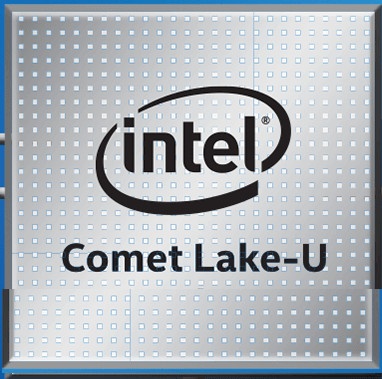Intel officially launched the 10th Generation Comet Lake processor family at the end of September with a choice of Core i3, i5, and i7 processors with 15W TDP (Comet Lake-U) or 4.5~5.5W TDP (Comet Lake-Y) which we’ve so far found in some laptops including some running Linux, and Windows mini laptops among other devices.
Intel has now quietly added two new SKU’s to their 15W Comet Lake-U with respectively Intel Celeron 5205U dual-core processor and Pentium Gold 6405U dual-core/quad-thread processor which will come at a lower price than their Core i3/i5/i7 siblings.
We’ll find the two new processors at the top of the comparison table below together with previously launched Comet Lake-U processors.
| SKU | Cores / Threads |
Cache | TDP/ UP TDP |
Base Freq (GHz) | 1C Turbo (GHz) |
AC Turbo (GHz) |
GPU Freq (MHz) |
Memory support |
|---|---|---|---|---|---|---|---|---|
| Celeron 5205U |
2/2 | 2MB | 15W | 1.9 | N/A | N/A | 900 | LPDDR3 2133 /DDR4 2400 |
| Pentium Gold 6405U |
2/4 | 2MB | 15W | 2.4 | N/A | N/A | 950 | LPDDR3 2133 /DDR4 2400 |
| i3-10110U | 2/4 | 4MB | 15W/25W | 2.1 | 4.1 | 3.7 | 1050 | LPDDR4x 2933 /LPDDR3 2133 /DDR4 2666 |
| i5-10210U | 4/8 | 6MB | 15W/25W | 1.6 | 4.2 | 3.9 | 1100 | LPDDR4x 2933 /LPDDR3 2133 /DDR4 2666 |
| i7-10510U | 4/8 | 8MB | 15W/25W | 1.8 | 4.9 | 4.3 | 1100 | LPDDR4x 2933 /LPDDR3 2133 /DDR4 2666 |
| i7-10710U | 4/8 | 12MB | 15W/25W | 1.1 | 4.7 | 3.9 | 1100 | LPDDR4x 2933 /LPDDR3 2133 /DDR4 2666 |
The new processors come with less L2 cache (2MB), do not support frequency boost, nor LPDDR4x memory. You can find a side-by-side comparison of the new parts on Intel’s website. Both are basically identical except for hyperthreading support in the Pentium model, and higher CPU & GPU frequency.
Pricing on Intel Ark’s website does not always reflect reality, but as an indication, Intel Core i3-10110U recommended price is $281, while the Pentium Gold 6405U processor goes for $161, and the Celeron 5205U costs $107 when purchased in 1000-units quantities.
Via Liliputing and AnandTech

Jean-Luc started CNX Software in 2010 as a part-time endeavor, before quitting his job as a software engineering manager, and starting to write daily news, and reviews full time later in 2011.
Support CNX Software! Donate via cryptocurrencies, become a Patron on Patreon, or purchase goods on Amazon or Aliexpress





